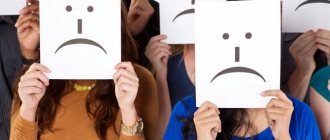Excessive concern for cleanliness, constant disinfection of door handles and switches, frequent and prolonged hand washing, special unpacking of products from the store, turning into a real quest - this is an incomplete list of what goes into the life of a person suffering from mysophobia.
Maintaining hygiene and taking care of neatness is the norm for a civilized person, but only until it becomes a pathological addiction. Mysophobia arises from fear of pollution or infection, increased attention to cleanliness.
General information
Mysophobia , or otherwise fear of pollution, is a psychological disorder and is expressed in the form of an obsessive fear of getting dirty, being in a polluted room, and in general, of coming into contact with dirt and potentially contaminated objects.
It should be distinguished from germophobia, verminophobia, bacteriophobia (fear of germs) and other phobias , where fear consists of the fear of contracting an infectious bacterial or other disease when interacting with contaminated objects and the risk of getting germs, for example, on your hands. If earlier the desire to wash your hands was a sign of fear of dirt and obsessive-compulsive disorder , then later the American psychologist G.S. Stellivan found out that the basis is not a fear of dirt and germs, but solely the desire to ensure that hands are always washed.
Despite the fact that the disorder is quite rare, many famous people suffered from it - F. Nietzsche, V. Mayakovsky, V. Dobrynin, etc., and was also highlighted in such films as “It Can’t Be Better”, “Cleaning with Passion” ", in the television series "The Big Bang Theory" (main character S. Cooper)
Diagnostics
This disorder interferes with a person’s normal life; treatment of mysophobia is a matter for specialists, psychiatrists and psychotherapists, depending on the degree of its severity. To relieve the patient of obsessive panic, they use an integrated approach that combines techniques for influencing the psyche and medications. Healing takes time and effort, especially in advanced cases. The patient and the doctor will be required to diligently and follow all recommendations. Only in this case can we hope for remission and lasting results.
The specialist provides a test for mysophobia, based on the results of which he can conclude how serious the patient’s case is and what methods should be chosen for successful therapy. Usually, patients themselves do not think about how to cure mysophobia. This question often worries their loved ones and only when the patient loses touch with reality and is in constant tension from fear of infections.
If a psychotherapist has diagnosed mysophobia, how to treat this disease? For example, the method of cognitive therapy is considered quite successful. First of all, the doctor and patient work together to find the root cause, and then learn to keep fear under control. To do this, use the Schwartz technique, which consists of four stages.
How to get rid of mysophobia
1. Understanding that germs are not as harmful as washing your hands too often and treating all surfaces with antiseptic. The realization that fear of infection is irrational. It is phantom, exaggerated and invented by the man himself. 2. Search for the cause that influenced the development of the disease.
3. Learning to combat obsessive images about germs, the ability to be distracted and replace negative experiences with positive emotions.
4. Analyzing your fears and trying to see yourself from the outside. Understanding the absurdity of the situation and obsessive actions.
In addition to this therapy, hypnotherapy is used in the treatment of fear of germs. Immersed in hypnotic sleep, the patient receives instructions from the doctor that will help him cope with obsessive states. He is also instructed in the field of auto-training. A person receives a number of recommendations for independent use. This helps reduce anxiety and increase self-esteem.
To achieve a greater effect, a specialist may prescribe certain medications. These are medications that help reduce anxiety, improve sleep and lift your mood. All together helps to quickly get rid of the phobia.
Pathogenesis
Mysophobia may be a manifestation of obsessive-phobic symptoms of schizotypal personality disorder . As the main components of the syndrome, obsessive fear of pollution and fear of germs can be exacerbated under certain conditions, causing patients to become antisocial and isolated. For example, Mayakovsky had an eccentric habit of carrying disinfectant in his right pocket, which he used immediately after shaking hands.
Initially, a phobia is formed in a pathogenic situation, intensifies under the influence of memories and fills all thoughts, turning into obsession and developing like conditioned reflexes.
Concept of fear of germs
Most psychotherapists tend to believe that germophobia is not a separate disease, but a manifestation of obsessive-compulsive disorder (OCD). People suffering from this disorder see themselves in constant danger of becoming infected with germs and getting sick. The main fear that is present in a person suffering from germophobia is associated with rooms, objects and objects “infested” with germs. It seems to the patient that they are everywhere and can cause him harm. A phobia is born in the subconscious as a result of the inability to see the object of fear. This is not only a fear of germs, but a fear of an invisible enemy that can harm the body while remaining unnoticed.
Classification
Mysophobia is not a classic example of the fear of getting sick ( nosophobia ) or due to contact with dirty objects, dust, fear of contracting helminths or other infections, while fear and fear may concern the following objects:
- chemicals, patients may fear radiation ( radiophobia ) or other chemical contamination;
- small objects - fragments ( oxyphobia ), rusty nails that may be in dirt, earth, sand, etc.;
- sewage – ripophobia ;
- fear of dirt and the germs contained in it ( spermophobia );
- non-washable items, furniture and rooms in general, which, even if they look clean, may be second-hand, dusty ( amatophobia ) or truly dirty.
Why is mysophobia dangerous?
Mysophobes are passionate about cleaning; they abuse detergents, antiseptics, medications, and dietary supplements. Such close contact with chemicals can lead to somatic complications.
In addition, mysophobia provokes the development of psychological complications. The person withdraws into himself, refuses to leave the house, and stops communicating with friends. Problems with socialization, depression and OCD are the main psychological complications.
It is important! Living in sterile conditions weakens the human immune system. Mysophobes are more vulnerable to dirt and germs than other people.
Causes
Obsessive states and fears usually develop as a result of a long-term psychotraumatic situation. Most often, the fear of dirt is perceived as an extracorporeal threat and is caused by obsessive thoughts and fears for one’s health or for one’s loved ones, which can be triggered by unpleasant memories or ideas.
The object of a phobia is a symbolic projection of real objects that were associated with traumatic situations, anxiety, or separation of the child from his parents. Thus, to trigger neurosis , repetition of traumatic events is sufficient, for example, anticipation of the moment of separation from the object of attachment.
In addition, the following are considered predisposing factors for the development of mysophobia:
- inculcation by the media of the need for constant maximum cleansing of one’s homes and body;
- suggestibility and psychological imbalance;
- strict education and lectures on the horrors of pollution and poor hygiene;
- hypochondriacal personality type;
- hereditary depression ;
- examples of negative experiences among people in a close circle of friends, for example, contracting AIDS from a needle in public transport;
- increased sense of perfectionism and desire for self-improvement.
Therapy methods
Most often, the disease lasts several years and is perceived by others as character traits. At first, the desire for cleanliness, neatness, caution and disgust do not affect social relationships and do not spoil life. But the disease is dangerous because ignoring the first signs aggravates its development and leads to consequences that become difficult to ignore. They become a problem for the patient and his family.
If it is established that germophobia and mysophobia have developed as a form of neurosis, then individual cognitive behavioral psychotherapy becomes the main method of treatment. It is aimed at relieving or reducing nervous tension. To do this, the doctor may recommend to the patient:
- adjust your daily routine;
- make physical activity regular;
- use relaxation and meditation techniques;
- balance your diet by eliminating alcohol and caffeine;
- yoga and breathing practices;
- communication with people who have similar problems, sharing experiences of overcoming the disease.
To treat advanced and severe forms of the disease, antidepressants are prescribed. Their short-term use has no side effects, but is effective in the complex treatment of the disease. With such neuroses, organic changes occur in the brain that are associated with disruptions in its normal functioning. Antidepressants improve organic processes and make cognitive behavioral psychotherapy more effective.
Another method of treating mysophobia is exposure therapy. This is a treatment method that is based on the action of the irritant that causes symptoms.
Short sessions with mild stimuli are gradually replaced by stronger ones. When the highest tension from meeting his fear is reached, the patient understands the illusory nature of the danger and the level of anxiety gradually decreases.
Relaxation therapy, hypnotherapy and auto-training are also used to treat mysophobia. The selection of appointments for each individual patient may vary. It all depends on establishing an accurate diagnosis, the causes of the disease, the severity and individual reactions to therapy. The support of the attending physician is very important in it, who supports the patient and helps control his anxiety.
Symptoms
As a result of obsessive fears, neurasthenia or neurosis may develop, and also manifest itself in the form of the following symptoms:
- increased irritability and/or tearfulness, as well as other manifestations of hyper-emotionality;
- attacks of suspiciousness and anxiety;
- depressed mood and thoughts;
- sleep disorders;
- fatigue and decreased ability to concentrate for long periods of time;
- difficulties adapting to a team;
- motor retardation;
- idiopathic muscle spasm or tremors ;
- vegetative-vascular disorders, including headaches, increased sweating of the palms, fainting , shortness of breath appetite disturbances and disorders of the digestive system.
In addition to physiological and mental disorders, patients develop a system of protective rituals. In mysophobes, the fear of dirt is expressed in an obsessive desire for cleanliness and disgust:
- constant hand washing and use of disinfectants;
- avoiding public restrooms, transportation, or other common items;
- disgust towards contact with animals, close relationships and physical contact with people;
- frequent change of clothes and linen to clean ones;
- the desire for self-isolation, including avoidance of social events, lack of desire to get close to anyone;
- constant use of personal hygiene products, gloves, masks, etc.;
- too frequent general cleaning of the house with a large number of different expensive cleaning products.
What it is
The concept of "mysophobia" was introduced by scientist William A. Hammond in 1879, when he researched and described this condition. By his definition, this is an obsessive state of morbid fear of dirt, which is manifested by constant hand washing. This action gives a person suffering from mysophobia a feeling of control over the situation, it calms and brings temporary relief. While doing this, he only thinks about the need to have clean hands. Pathological disgust with dirty and, in the opinion of patients, dangerous objects and places leads to inadequate precautions.
Fear of germs is another type of phobia - germophobia. With it, even knowledge about the benefits of certain types of microorganisms does not reduce the state of anxiety and restlessness. This variant of phobic disorder forms a pathological connection between a feeling of insecurity, loss of control, and the need to protect one’s health and life from the impending threat of infection.
The development of mysophobia has a direct connection with the social life of a person and society. In the changes that come with the development of technology, science, germophobes and mysophobes are finding new sources of threat.
In the early 20s of the last century, people were afraid of bacteria, which claimed millions of lives. Constant cleansing and disinfection of hands, rituals for treating the body, household items, clothing, wearing gloves, certain patterns of movement around the home to avoid contact with furniture and objects, withdrawal from the environment, and as a result, loss from normal life. These manifestations of the disease deprive a person of the opportunity to become happy.
With the invention of penicillin, when most diseases caused by bacteria became curable, a new fear of viruses emerged. HIV, hepatitis, bird flu - these diseases caused by viruses frighten every person, but in people prone to anxiety, this fear takes the form of a phobia. In this case, the emphasis shifts to ways of transmitting the disease.
Possible infection through blood, saliva or sexual contact forces a person suffering from germophobia to scan risk groups (drug addicts and antisocial elements) and avoid places that pose a potential threat of infection. Thus, there is a constant search for risk factors and ways to avoid or overcome them.
A simple diagram of the development of a phobia looks like a chain of interconnected factors. Against the background of stress and the anxiety and worry associated with it, there is a desire to find a source of discomfort and danger in the external environment. Growing neurosis significantly changes a person’s behavior, up to the loss of work, friends, and final self-isolation from the outside world.
Other types of environmental fears make people afraid of technical objects and materials.
Germophobia and mysophobia, like other phobias, can seriously change your life and lead to serious consequences, which are more difficult to correct than to prevent.
How to live with mysophobia
Professional treatment of mysophobia lasts from 1 to 3 months (depending on the characteristics of the disease and the client’s condition). However, it is not always possible to contact a specialist. Many people manage to live with mysophobia and maintain fear at an acceptable level. How to do it? Start keeping a diary in which you will record situations when anxiety intensifies. In a couple of weeks, you will identify all stressful situations and personal triggers (external factors that trigger negative processes in the mind).
Try to mentally prepare for such situations in advance. Do not instill fear, but, on the contrary, convince yourself that nothing threatens you, that you can cope with anxiety. Do not feed the phobia and try to get rid of rituals. Tell a loved one about your problem, ask for help and support. Motivate yourself, come up with a system of punishments and rewards. If your condition is uncontrollable, then find the opportunity to visit a psychologist.
It is permissible to use plant-based sedatives or soothing decoctions. But be sure to consult your doctor first! Any, even folk remedies, have indications and contraindications, side effects.
Treatment of the disease
Mysophobia can be cured, but this requires the desire of the patient himself. The most effective techniques in this case are the same as those used for other types of phobic disorders. Cognitive behavioral therapy comes first here. In this case, the patient is taught to overcome fears. Thanks to the doctor, the person goes through intense exposure to dirt. For example, shaking the hands of other patients, as well as touching garbage. Such treatment is always effective, mysophobia recedes, and excellent results can be achieved quickly.
Medications are also used to treat mysophobia. As a rule, these are various antidepressants prescribed by a specialist. Pharmacotherapy perfectly complements cognitive therapy, so the treatment is as effective as possible. At the same time, it should be noted that medications often cause unwanted effects, so drug treatment should not be used continuously. In life you can find many examples of mysophobia, and even famous personalities suffer from such a phobia. Therefore, you should be patient and consult a doctor with your problem, and not tolerate this problem. It is important that loved ones treat with understanding and help the person overcome mysophobia, but criticizing and reading morals is unacceptable in this case, do not forget about it!
WHEN DOES HEALTH CONCERNS BECOME A DISORDER?
What is life like for St. Petersburg residents who were pathologically afraid of infection even before it became mainstream? How do you understand that you are not just worried about your health, but are turning into a hypochondriac and looking for illnesses in yourself? About when caring for the body becomes a sign of mental illness, Sobaka.ru
said psychotherapist, psychiatrist, general director of the Cognitive Psychotherapy Clinic Andrey Kamenyukin.
Do patients with hypochondria often come to you? Are there many hypochondriacs in St. Petersburg?
Research data suggests that up to 2-3% of the population suffers from hypochondriacal disorder. But St. Petersburg residents rarely come to a psychotherapist with the request - I’m so concerned about my health, I need to do something about it. Hypochondriacs have a different model of behavior - a person dispels his fears and worries by turning to other specialists. As a rule, they make an appointment with therapists, endocrinologists, neurologists and cardiologists, and undergo numerous studies. At the same time, the “healthy” report from the doctor does not give the hypochondriac any peace of mind - he suspects that doctors lack qualifications, and laboratories conduct poor-quality tests. After a while, some people realize that the problem may be psychological in nature. Usually, by this time a large amount of medical information has already been accumulated, and a person begins to doubt - maybe the problem is not in the body, but in the thoughts.
Hypochondria is a disease in itself.
Yes, the International Classification of Diseases (ICD-10) includes hypochondriacal disorder, which is characterized by excessive preoccupation with one’s health. If we talk about the criteria, a person must have this concern for at least six months, he must worry about one or two serious illnesses and have a strong feeling that he is sick, regardless of the opinions of doctors. The difficulty is that often a person argues for his fears with specific sensations in the body - something itches or tingles, or shortness of breath occurs.
Are these sensations in the body imaginary? Do they come from your head?
When talking about hypochondriacal disorder, it is important to mention a phenomenon called “somatosensory amplification.” It is as follows: when people focus their attention on any bodily sensations, they perceive these sensations more vividly, and the sensitivity in the body psychologically increases. And this makes it possible to say: “I feel like something hurts.” It is important to understand that our body is constantly working - it is a machine that generates energy and bodily sensations non-stop. And normally, of course, we don’t notice everything that happens to our body. We do not pay attention to sensations that are not clearly painful. A person with hypochondriacal disorder often has a lower sensitivity threshold. Having recorded an unusual sensation in the body, he begins to direct attention to it and, by directing attention, intensifies the sensation.
Of course, hypochondria manifests itself in people who, in principle, are prone to anxious conclusions. It is based on fear - the basic human experience that determines his behavior and allows him to survive. When a person notices something that scares him, he tries to solve this problem. At the same time, it seems to him that he is thinking rationally - if there is some symptom, then he needs to worry about it. But the problem is that fear for one’s health may turn out to be groundless, and behavior may be irrational and harmful to a person.
How do you treat these patients? Is it really possible to get rid of hypochondria?
When, after diagnosis, it is obvious to the doctor that this is a hypochondriacal disorder, and the patient himself is aware of the problem, we try, as part of therapy, to change thinking, to teach the person to perceive the symptoms differently - not as a threat to health. As I already said, by the time a client contacts a psychotherapist, a client can have a huge evidence base confirming that he is healthy - once they came to me with two packages of extracts from outpatient records and laboratory tests.
Getting rid of hypochondria can be a long and multi-step process. For example, one of the clients who had already contacted me about panic attacks and cancer phobia (we dealt with these conditions quite quickly), at some point became convinced that he had a demyelinating disease of the central nervous system. Unpleasant sensations in the muscles of the lower leg brought him to this thought. St. Petersburg resident M. visited all the leading neurologists in the city and underwent serious invasive studies. Everyone told him that there was no pathology. However, the sensations in the body did not stop, the patient looked for doctors in Moscow, studied German clinics. He turned to me to confirm that the problem was not psychological, but neurological. However, the patient showed clear signs of hypochondriacal disorder, and we began to work with his thoughts.
During therapy, it was important to develop critical thinking skills: is it even logical to assume that you have a disease without any justification? We created two bodies of evidence: the first explained why sensations in the body do not have to be a sign of illness (the arguments were the opinions of doctors and research data); the second is what causes the symptoms, if not the disease. All neurologists said that the sensations arise due to increased sensitivity to muscle vibrations. In addition, the St. Petersburg resident regularly played sports, and the discomfort could be associated, among other things, with accumulated fatigue in the muscles.
However, logical explanations calmed M. only for a while. It became clear that concerns about his health worsened when he was under stress, for example, due to problems in business. Increased anxiety created the conditions for the brain to make dire predictions about the state of health. Therefore, it was important to teach M to cope with stress more effectively in order to reduce anxiety. Stress management skills helped him, and he felt less worried. But they still didn't go away completely. For example, while reading a book in the evening, the thought began to swirl in my head: “No, I’m still sick, and in the end I will remain disabled and lose the ability to move.” Therefore, it was important to teach M. not only to challenge his thoughts, but also to distance himself from them: “My brain is now generating such thoughts, but I do not have to believe in them.” First, there is no evidence that confirms that the thoughts are true. Secondly, believing in these thoughts does not help in any way to improve the condition or get rid of sensations in the body.
An essential part of psychotherapy was the development of the ability to plan one’s life and act based on what is important and valuable to the client, despite periodically arising hypochondriacal thoughts. Together with other skills, this helped me not to focus on sensations and their interpretations.
As a result, M. learned to react to thoughts less sharply, and in the end they went away altogether. Our work with hypochondriacal disorder took about a year.
Could the number of hypochondriacal disorders increase due to the COVID-19 pandemic?
There are no studies yet that would document an increase in incidence. But experts assume that it will be observed. I don't think we will face a pandemic of hypochondria and panic disorders, but the context in which we live suggests that these disorders may affect more people. I repeat that the main stream of those concerned about their health will go not to psychotherapists, but to general specialists. For example, the same rapid heartbeat that occurs during anxiety is interpreted by many as a sign of illness. It is important to note here: although we are talking about excessive concern for health, it is necessary to maintain a balance - of course, pain and discomfort in the body should not be ignored. The nuance is that hypochondriacs retain thoughts about the disease even after they receive information about its absence.
What about the fear of infection? Are there people in St. Petersburg who are mortally afraid of contact with possible viruses and germs?
The obsessive fear of contamination or contamination is called mysophobia and is common in people with obsessive-compulsive disorder. Such patients are much more likely than hypochondriacs to end up in a psychotherapist's office, because they realize that their behavior is not entirely logical. But unfortunately, many people self-stigmatize and hide the presence of the problem. The life of a person with mysophobia consists of protective rituals: one of my clients, an employee of a St. Petersburg IT company, worked in the office wearing white gloves, and upon arriving home, he took off all his clothes, threw them into the washing machine and went to take a shower - but not 10 minutes, but for a couple of hours. After that, he changed into clean underwear and if anything related to his work came into contact with it, the shower ritual had to be repeated again. By the way, such repeated washing and mechanical impact on the body in mysophobes often leads to quite noticeable damage to the skin.
As I already said, many mysophobes understand that there is no logic in their actions, but cannot stop for fear of not performing the ritual. It seems to them that if they don't do it, something terrible will happen. Some of them cannot even explain what diseases they are afraid of - there is only an abstract fear of infection. Often, when we move away from uncertainty to a more specific understanding of our problem, for example, listing possible diseases and the risk of contracting them, the level of fear decreases.
How have these patients been affected by the pandemic and fear of contracting coronavirus infection?
Unfortunately, these patients received legalization of their fears during the pandemic. After all, what are they telling us? Wear masks and gloves, wash your hands, try not to leave your home to avoid infection. This is the behavior pattern of one of many patients with mysophobia. They behaved this way before the pandemic, but now they have received permission for their actions. Unfortunately, the coronavirus situation may reinforce their condition. Therefore, when working with clients with mysophobia during the pandemic, we tried to distinguish between behavior: which actions are rational and reasonable, and which do not make sense. For example, wearing a mask and gloves when leaving the house is reasonable behavior. But it is unreasonable to wash your hands for three hours when returning from the street, or to treat your apartment with disinfectants every day if you are not in the “red zone”.
How do you help clients with mysophobia overcome rituals?
When working with OCD, we also use exposure therapy - we teach a person to face what he is afraid of. For example, it is important for a patient who has been showering for several hours to face his fear of what will happen if he spends only a few minutes there. By leaving the shower ahead of time and breaking the usual ritual, a person is afraid that something terrible is about to happen - by his actions he tried to avoid this terrible thing. But if he experiences this anxiety, does not run back to the bathroom and does not start washing as much as he wanted, then the worries gradually begin to fade away. To extinguish a conditioned reflex, for some patients one session of exposure therapy is enough, with some it is necessary to work through the situation up to 25-30 times.
Could a pandemic cause people to develop mysophobia?
Maybe. In general, the modern view of obsessive-compulsive disorder suggests that it is not just a psychological problem, but also a neurobiological one. Research shows that brain structures such as the orbitofrontal cortex, anterior cingulate cortex, thalamus, and caudate nucleus function less well in people with OCD. For example, the anterior cingulate cortex is responsible for the ability to stop certain actions in a timely manner, and in patients with OCD this stop valve does not always work. We are not saying that these brain structures in people with a tendency to obsessive-compulsive disorder are in some completely ruined state, but in a certain context they can fail - for example, due to severe stress. The current information environment, which creates an aura of danger, is also a powerful stress factor and can trigger the onset of the disease. But when we leave this environment, unhealthy manifestations can also go away. In general, mysophobia, which does not reach clinical manifestations, can be observed in 30-40% of the population. And only 2-3% of people can be diagnosed with OCD.
How can you help yourself maintain a balance - take care of your physical health, but not undermine your psychological one?
Firstly,
Don’t demand stoic calm from yourself. We find ourselves in a situation that can cause anxiety for absolutely everyone. And it is wrong to demand calm from yourself, because in the current context of events it is practically impossible. It is important not to scold yourself for anxiety, but to accept and acknowledge this condition. Even if it is strong at the moment, this is normal; your body is capable of such reactions during times of stress. Moreover, if the level of anxiety goes off scale, you need to learn to reduce it.
Secondly
, learn to separate things into those that you can control and those that you can’t. You cannot stop the development of the epidemic; you cannot know whether the person you met on the street had contact with someone carrying the virus. In doing so, you can actually take control of certain aspects of behavior. There are effective recommendations from WHO and Rospotrebnadzor - for example, wear a mask in public places, avoid contact in large crowds of strangers.
Third,
Use skills that allow you to activate the parasympathetic nervous system - responsible for relaxation. For example, self-regulation techniques, meditation or so-called mindfulness, that is, awareness. Sports activities are also appropriate!
Fourthly,
learn to treat your thoughts correctly - not every one of them is worth believing. For example, a feeling of overwhelming anxiety is a marker that it is time to pay attention to your thoughts and sort them into shelves. I encourage clients to write down anxious thoughts by answering a few questions: 1) How logical is what I'm thinking? 2) How reasonable is what I think, what evidence can I give in favor of it? 3) What evidence can refute my point of view? 4) Does the way I think help me? What consequences do these thoughts lead to?
And fifthly,
even during a pandemic, do not forget about your values. If we become overwhelmed by anxiety, we often lose the opportunity to live in accordance with our values. Under the guise of self-care, you can retreat into fears and anxiety, and begin to ignore any, even safe contacts, your loved ones and real self-care. And during a pandemic, it is important to remember what kind of life you want to live.
Behavior of germaphobes
The patient has an obsessive desire to wash his hands and disinfect them after contact with any objects, surfaces, or animals. A pathological fear of various microbes that can be caught from contact with dirt leads to the fact that a germaphobe looks for every opportunity to use soap, wears protective gloves and masks.
The fear of pollution forces a germaphobe to monitor cleanliness; even the slightest bacteria cannot be allowed to enter their home.
Psychologists' opinions
The world that surrounds us is teeming with various microbes and bacteria. This does not mean that all of them are a potential threat to human life and health. Human immunity is adapted to fight pathogens, so you should not be afraid of instant infection when coming into contact with contaminants of various origins.
Psychologists say:
- Children acquire immunity to various types of microorganisms by playing in the dirt from an early age. Such children get sick less often than those whose parents forbid them to touch anything on the street. Therefore, there is nothing fatal about your child playing around in dirt, sand and dust.
- There are people living today outside the civilized world. They don’t wash their hands before eating, eat berries from the bush, and still don’t get sick with colds or flu. These are completely healthy people with a strong, developed immune system.
- During seasonal illnesses, we cannot effectively protect ourselves, so sufficient precautions would be: washing your hands after being in public places, lubricating your nose before going outside, and trying not to be exposed to hypothermia.
- If you become infected and recover from the disease, your immunity will become stronger, which will allow you to resist this type of viral infection the next time. This is how the human body works. This was due to millions of years of adaptation to the conditions of the surrounding world.
- Microbes exist everywhere, which is a natural state of affairs and not dangerous to humans. Dirt is not a threat, and if you get dirty, just take a refreshing shower.
The information belongs to the site R_E_W.M_E_D
Related posts:
- Anancastic Personality Disorder Anancastic Personality Disorder (APD) is a congenital or early-onset…
- Causes of mental disorders At the moment, mental disorders have been studied least extensively. Mental disorder…
- Nosebleeds during stress Anyone has had to deal with nosebleeds at least once...
- Cyberchondria. A disease that absolutely anyone can suffer from. Did your neighbor cough on the minibus? It’s definitely a coronavirus, I’ll get sick tomorrow...
Mysophobia, automysophobia and entomophobia
Along with germophobia, the patient is afraid of germs, dirt or dust pollution, which are the main source of proliferation of bacteria and microbes that can cause a variety of diseases. A phobia associated not only with the fear of germs themselves, but also with obsessive thoughts that they can make you sick, is called mysophobia (literally “fear of dirt”). What is mysophobia? In fact, it is the fear of infection that makes a person panicky about touching any surfaces and objects that may pose a danger. Mysophobia, according to psychologists, is an indispensable companion in the life of a germaphobe who runs in panic away from dust and dirt. The reason why automysophobia appears is identified, and it is also present in a person suffering from a fear of germs. This is the fear of being dirty.
Fear of dirt is a type of germophobia
What else is a germaphobe afraid of? Insects can also frighten him, as a result of which a kind of entomophobia (fear of insects) develops. It is not their appearance that worries the patient, not the likelihood of being stung or bitten, but the fear of getting an infection from a passing cockroach or a flying fly. A phobia of germs forces a person suffering from germophobia to avoid any place where an insect might be found.










